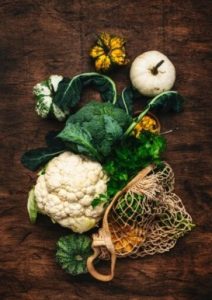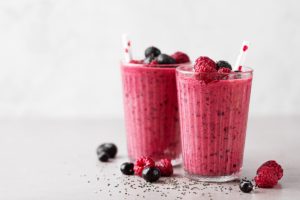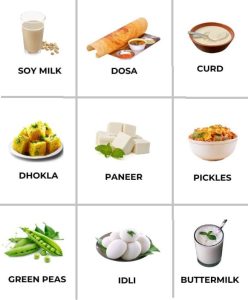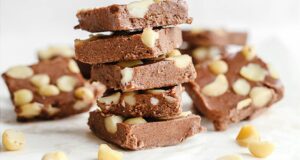Estrogen dominance is a condition that occurs when there is an imbalance between estrogen and progesterone in the body. This hormonal imbalance can lead to a variety of symptoms, including weight gain, bloating, mood swings, and irregular periods. Adopting an estrogen dominance diet can help restore hormonal balance and alleviate these symptoms. this article will explore the best foods to include in an estrogen dominance diet and how they can help improve hormone levels.

What is Estrogen Dominance?
Estrogen dominance occurs when the body has too much estrogen relative to progesterone. This imbalance can result from a variety of factors, such as poor diet, stress, exposure to environmental toxins, or certain medical conditions.
Symptoms of Estrogen Dominance
Common symptoms of estrogen dominance include:
- Irregular or heavy periods
- Weight gain, particularly around the hips and thighs
- Mood swings, anxiety, or irritability
- Fatigue
- Breast tenderness
- Headaches
- Sleep disturbances
Tests to Diagnose Estrogen Dominance
Several tests can help measure estrogen and related hormone levels in the body to detect estrogen dominance. The most common tests include:
- Blood Tests
- Estradiol Test: Measures the primary form of estrogen in the body. High levels, especially when progesterone is low, may indicate estrogen dominance.
- Progesterone Test: Low progesterone levels in relation to estrogen can confirm estrogen dominance.
- Urine Tests
- 24-Hour Urine Test: Measures estrogen metabolites and helps assess how the body is processing estrogen. Imbalances can indicate estrogen dominance.
- Saliva Tests
- Measures free, bioavailable hormones, including estrogen, progesterone, and cortisol. This test is less common but can offer insights into hormone imbalances.
Health Condition Associated with High Estrogen
- Breast cancer
- Ovarian cancer
- Endometriosis pain
- Insulin resistance
- Polycystic ovarian syndrome (PCOS)
- Uterine cancer (endometrial cancer)
- Tumors on ovaries and adrenal glands
Estrogen Dominance Diet
Diet and Estrogen Dominance
The foods we eat significantly impact our hormone levels. A diet rich in whole, nutrient-dense foods can support hormone balance and reduce the symptoms of estrogen dominance. Conversely, a diet high in processed foods, sugars, and unhealthy fats can contribute to hormone imbalances. The key to managing estrogen dominance through diet is detoxifying and balancing your hormones with foods that support liver health, gut health, and nutrient absorption.
Foods List / Allowed foods in Estrogen Dominance Diet

1. Cruciferous Vegetables
Cruciferous vegetables like broccoli, cauliflower, brussels sprouts, and kale are rich in indole-3-carbinol, a compound that helps the body metabolize estrogen more efficiently. These vegetables support liver detoxification, which is essential for clearing excess estrogen from the body.
- Tip: Aim to incorporate at least one serving of cruciferous vegetables into your meals daily. If you have thyroid issues, you can incorporate broccoli and cauliflower in cooked form instead of consuming them raw.
2. Fiber-Rich Foods
Fiber plays a crucial role in hormone regulation by helping to eliminate excess estrogen through the digestive system. Foods high in fiber, such as whole grains, legumes, fruits, and vegetables, can promote regular bowel movements and support healthy estrogen metabolism.
- Tip: Include fiber-rich foods like lentils, beans, apples, and berries to help balance estrogen levels.
3. Flaxseeds
Flaxseeds are an excellent source of the plant compound lignans, that help regulate estrogen levels. They act as phytoestrogens, which can bind to estrogen receptors and block excess estrogen from exerting its effects on the body. Flaxseeds also provide a good source of omega-3 fatty acids and fibers that help restore hormonal balance.
- Tip: Add ground flaxseeds to smoothies, oatmeal, or yogurt. You can also roast the flaxseeds and eat 1 teaspoon in the morning.
4. Healthy Fats
Healthy fats, such as avocados, olive oil, coconut oil, and nuts, are essential for hormone production. They help the body produce progesterone, which balances the effects of estrogen. Consuming adequate healthy fats can also help reduce inflammation and improve overall hormone function. Read – best cooking oil for hormonal balance
- Tip: Incorporate avocados or olive oil into your daily meals for hormone support.

5. Berries and Antioxidant-Rich Foods
Blueberries, raspberries, and strawberries are rich in antioxidants that help reduce inflammation and protect the body from oxidative stress. These antioxidants can help support the liver in metabolizing estrogen and prevent the negative effects of estrogen dominance.
- Tip: Add them to your morning smoothies for a delicious, hormone-supporting treat. Mid-time snacking on berries is good.
6. Leafy Greens
Leafy greens like spinach and moringa are rich in magnesium, which plays a key role in balancing estrogen and progesterone levels. Magnesium helps reduce symptoms of estrogen dominance such as bloating, mood swings, and fatigue.
- Tip: Add leafy greens to your salads, soups, and smoothies to ensure adequate magnesium intake.

7. Probiotic-Rich Foods
Gut health is crucial for hormone balance, as the gut plays a role in metabolizing estrogen. Foods like yogurt, kimchi, sauerkraut, and kefir provide beneficial probiotics that promote a healthy gut microbiome, helping to reduce estrogen dominance symptoms.
Foods to Avoid in an Estrogen Dominance Diet
While certain foods can support hormonal balance, others can worsen estrogen dominance. Avoiding the following foods can help in hormonal balance.
1. Processed Foods
Processed foods are high in refined sugars, unhealthy fats, and chemicals that can disrupt hormone balance. These foods can increase inflammation and lead to an overload of estrogen in the body.
- Tip: Opt for whole, unprocessed foods like fruits, vegetables, and lean proteins.

2. Sugar and Refined Carbs
Consuming excess sugar and refined carbohydrates can increase insulin levels and lead to fat storage, particularly around the abdomen and hips. This can exacerbate estrogen dominance and contribute to weight gain. Examples include pastries, cakes, donuts, macroons, puffs, etc.
- Tip: Limit your intake of sugary snacks and refined grains like white bread and pasta.
3. Soy Products (in excess)
While soy contains phytoestrogens, which may be helpful in small amounts, consuming too much soy can increase estrogen levels in the body, especially for those with estrogen dominance.
- Tip: Consume soy in moderation and focus on other sources of plant-based protein.
4. Caffeine and Alcohol
Excessive caffeine and alcohol consumption can disrupt hormone metabolism, leading to imbalanced estrogen levels. Reducing these beverages can help your body metabolize estrogen more effectively.
- Tip: Limit your intake of coffee and alcohol for better hormone regulation.

Lifestyle and Health Tips to Support Estrogen Balance
In addition to following an estrogen-dominant diet, consider these lifestyle changes to restore hormonal balance.
- Stress Management: Chronic stress can increase cortisol levels and worsen estrogen dominance. Practice relaxation techniques such as yoga, meditation, or deep breathing.
- Exercise: Physical activity helps regulate hormones and promotes the elimination of excess estrogen through sweat and the lymphatic system.
- Get enough sleep: Sleep is essential for hormone production and regulation. Aim for 7-9 hours of quality sleep per night.
Conclusion
An estrogen-dominant diet can help restore hormonal balance, reduce symptoms, and improve overall health. Regularly eating a simple home-cooked meal can do wonders in achieving hormonal balance, as well as restoring overall health and well-being. A balanced diet, combined with a healthy lifestyle, is key to managing estrogen dominance naturally.




